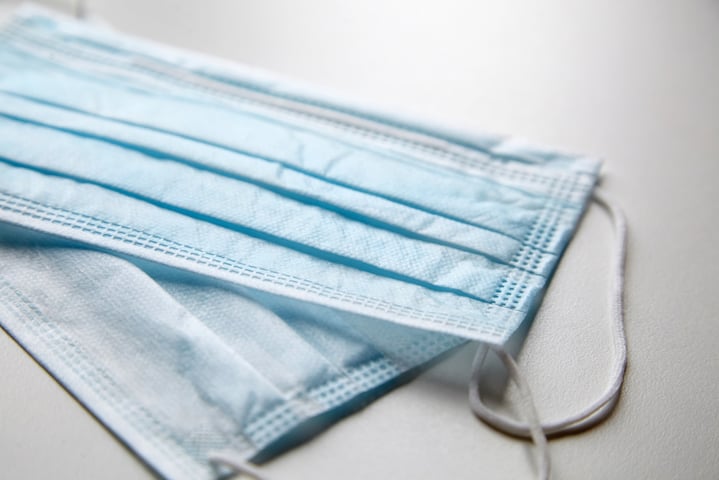
Medical face masks are intended to resist liquid penetration from the splatter or splashing of blood, body fluids and other potentially infectious materials. Many factors affect the wetting and penetration characteristics of body fluids, such as surface tension, viscosity, and polarity of the fluid, as well as the structure and relative hydrophilicity or hydrophobicity of the materials and the design of the mask itself.
Blood repellent surfaces are being fabricated but to evaluate their performance, a liquid that resembles blood is needed. The surface tension range for blood and body fluids (excluding saliva) is approximately 42 to 60 mN/m. To help simulate the wetting characteristics of blood and body fluids, the surface tension of the synthetic blood is adjusted to approximate the lower end of this surface tension range. The resulting surface tension of the synthetic blood is 42 +- 2 mN/m.
The synthetic blood is water based with a thickening agent and red dye to aid visual detection of penetration.
A stream at set velocity and distance is projected at the mask or mask material to assess its resistance to fluid penetration.
The ASTM F1670 standard defines the standard test method for the resistance of materials used in protective clothing to penetration by synthetic blood. The method presented in the standard is based on the research involving transmission of bloodborne pathogens such as Hepatitis B and C, and HIV in the 1980s. One of the requirements for fluid penetration tests is that the surface tension of the synthetic blood is measured according to ASTM D1331 standard.
The standard defines the surface tension measurement to be done with the force tensiometer using the du Noüy ring method. It highlights the importance of cleanliness when conducting the measurements. At least two measurements should be done to ensure the repeatability of the measurement. The video below shows the Du Noüy ring surface tension measurement in practice.
Surface tension plays an important role in Li-ion battery slurry optimization.
Surface tension plays an important role in the electroplating solution.
When measuring contact angles or making surface tension measurements with a pendant drop, selecting the correct tip or needle for your liquid is crucial.
The surface tension of water is about 72 mN/m at room temperature which is one of the highest surface tension for liquid.
Surface tension is a quantitative measure that can be correlated with a solution’s ability to remove dirt.
Surface tension and wettability are important physical properties that play a significant role in the effectiveness of agrochemicals.
Explains three different methods to measure surface tension.
The blog post describes what is surface tension and why is surface tension important in many industrial processes
The method to calculate the surface tension component is defined in ISO 19403-5:2017 standard.
